Still exactly the same values show (and don't show) up with the same interval. Looks like about 4x digital amplification after the ADC, which would make it function like a 12 bit one.
I got interested in the missing codes, and evaluated some exposures made with five different cameras under the same conditions. The subject was the back of a lens cap. The exposure was 1/4 sec. The aperture was all the way stopped down, just to make sure. The ISO was 6400. The exposures were the first after the camera had "rested" a bit, although I'd seen not much in the way of thermal effects previously. I selected a central area 200x200 pixels, and ran a histogram of the region between a count of 4 and one of 100.
I used dark noise as a way to make sure that the always-on-no-matter-what-you-do tone curve compresion of the Sony cameras wouldn't come into play.
First, let's look at the two cameras that behaved as expected. The first of those is the Nikon D4.
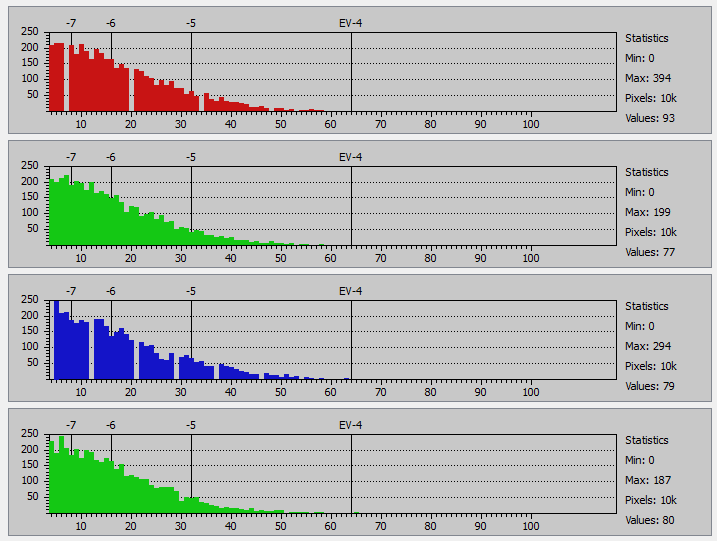
A few missing codes in the red and blue channels, which could well be due to ADC defects, or also digital gain applied to the red and blue channels. I'm thinking it's digital gain, because the noise appears to be higher in the red and blue, and I can't think of a reason why that would happen.
The next unsurprising results are from the Leica M9:
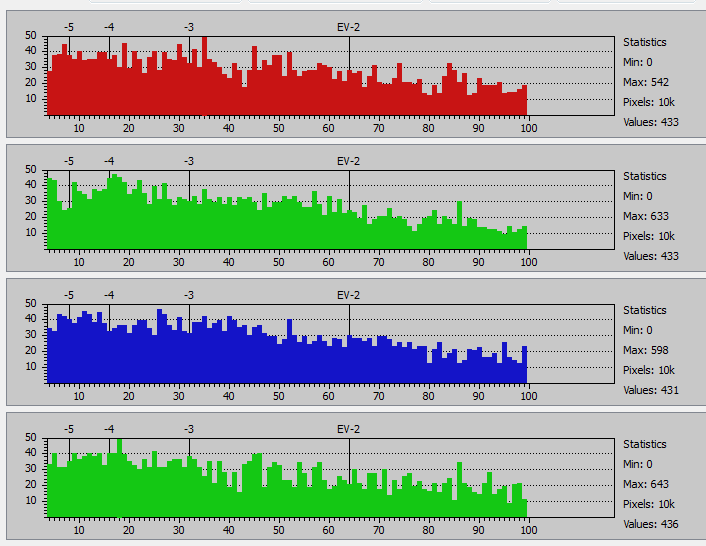
Noisier than the D4, to be sure, but that's no surprise, and no missing codes at all.
The Sony RX-1 shows an interesting result:
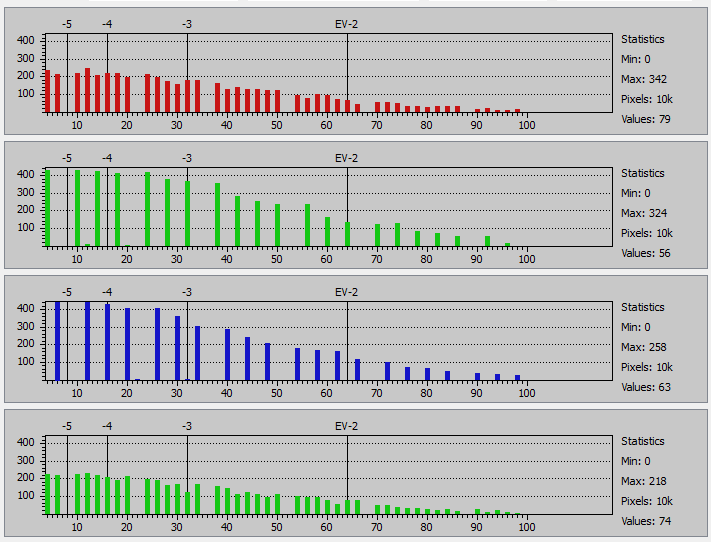
There are missing codes galore. The two green channels look quite different from each other. The upper green channel and the blue channel seem to be acting as if they'd been digitized by a 12-bit ADC, while the lower green channel and the red channel are doing a fairly good imitation of 13-bit digitized signals. The loss of the LSB might be due to some kind of digital gain that Sony puts in at higher ISOs, but I can't image that they'd so that with some channels and not with others, so I am at a loss to explain the low-resolution green channel and the blue channel results. A really bad ADC might miss some codes, but this is a 40,000 pixel sample (10,000 for each color plane), and probably is using several ADCs. I'm at a loss here.
Next up, the Sony NEX-7:
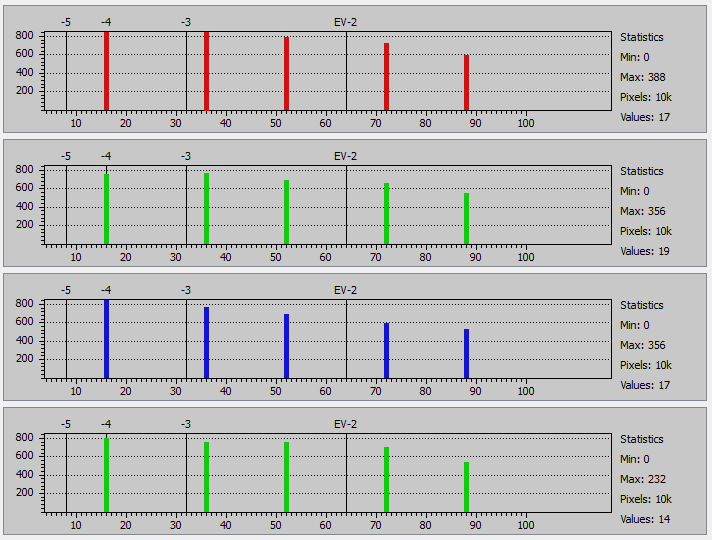
Wow! We're seeing steps of about 16 LSBs between occupied buckets, but it's not exactly 16 LSBs, and it's not just as if the lower four bits have been lopped off.
Finally, the Nikon D800E:
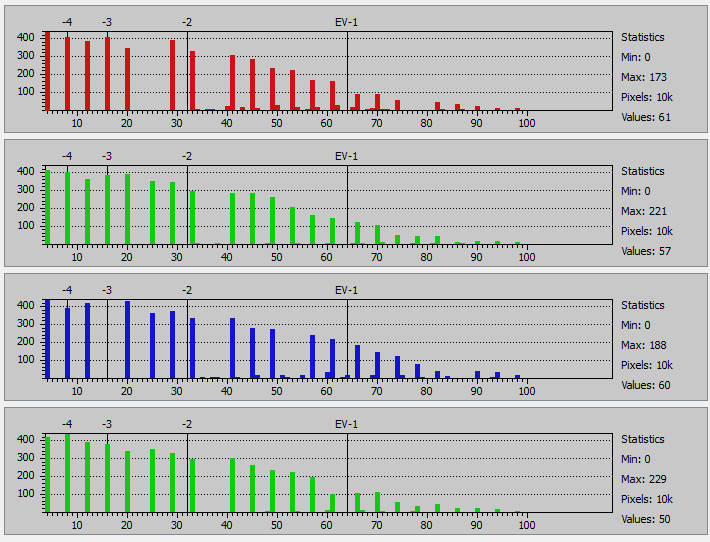
This is interesting, because, although the channels are mostly looking like they'd been digitized with a 12-bit ADC, there are many places where adjacent 14-bit codes are occupied, indicating that the comblike nature of the histogram is not the result of any planned processing.
Maybe this is an invalid test because dark noise may be patterned, but I think there's something worth exploring here. The results for he M9 and D4 indicate that some cameras respond to this test in a way that you'd expect them to.
I'm not sure where to go from here, but I'm going to pursue this. It could have serious implications for what Unity Gain ISO should mean to photographers using the D800E and the two Sonys.
Jim